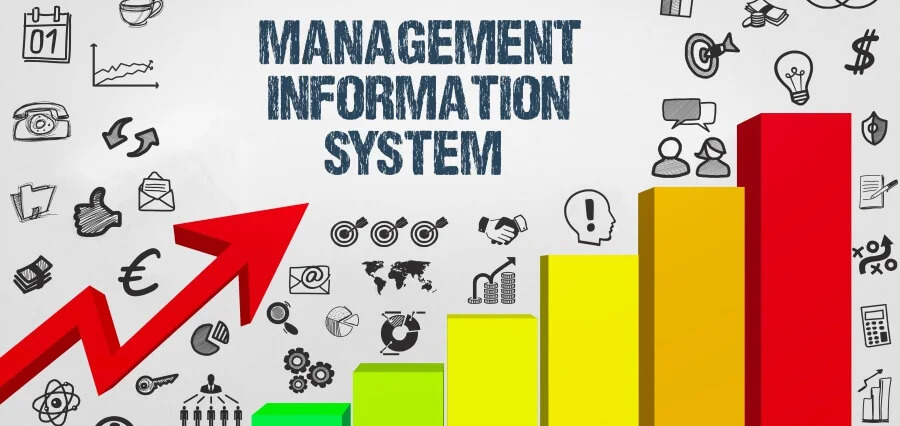Identifying the Key Elements of MIS
 Abhiash Nale
Abhiash Nale
Introduction
In today’s business world, seamless communication plays a crucial role in ensuring operational efficiency and strategic decision-making. A Management Information System (MIS) is developed to systematically document work through structured reports from various departments and teams. It serves as a backbone for effective management by facilitating real-time updates and ensuring transparent communication within organizations. This article explores the key elements of MIS and its impact on modern businesses.
Understanding the Management Information System (MIS)
What is an MIS?
A Management Information System (MIS) is an information system designed for decision-making, coordination, control, analysis, and visualization within an organization. It integrates people, processes, and technology to enhance planning and decision-making at the management level. The primary goal of an MIS is to increase the company’s value and profitability by optimizing its operations.
Key Elements of MIS
1. Data
Data is the cornerstone of an MIS. The system processes raw data into meaningful information that can be used for decision-making.
2. Technology
Technology infrastructure, including hardware and software, is essential in transforming data into actionable insights. Cloud computing, databases, and advanced analytics are key components that power MIS.
3. People
MIS requires professionals with expertise in data analysis and system management. Their role is crucial in handling, processing, and interpreting data for business decisions.
4. Data Quality and Consistency
Reliable MIS reports depend on high-quality and consistent data. Ensuring accuracy in data collection and processing is critical to the credibility of the system.
5. Information Sharing
MIS collects data from multiple sources and provides customized reports for different management levels, enabling effective communication and collaboration.
6. Improved Decision-Making
MIS delivers accurate and timely data that supports decision-making across various business areas, enhancing efficiency and productivity.
Characteristics of an MIS
Multiple Data Sources
MIS integrates information from various internal sources to provide a comprehensive view of business operations.
Regular Reporting
Organizations rely on MIS for generating regular reports, which helps track performance and progress over time.
Customizable Reports
MIS allows users to generate tailored reports based on specific business needs and strategic objectives.
Data Relevance for Decision-Making
An effective MIS ensures that the data presented is relevant, reliable, and useful for making informed decisions.
Advantages of MIS in Business Operations
1. Enhanced Operational Efficiency
MIS helps businesses streamline operations, improve existing products, and innovate new solutions while supporting informed decision-making.
2. Performance Monitoring
MIS provides detailed reports on revenue, staff performance, and other operational metrics, allowing businesses to assess their strengths and weaknesses.
3. Customer-Centric Strategies
By analyzing customer data and feedback, businesses can align their processes with customer needs and execute effective marketing campaigns.
4. Competitive Advantage
A well-implemented MIS gives businesses a strategic edge by optimizing resources and improving decision-making capabilities.
Higher Control with MIS
Organizations that implement MIS are better connected with employees and remain well-informed about ongoing processes. The real-time tracking of operations provides management with a clear picture, aiding in analysis and decision-making. MIS helps generate analytical reports that present an accurate and actionable overview of business performance. In situations requiring policy updates or changes in work methodologies, MIS serves as a reliable tool for developing new business strategies.
Tracking Business Progress with MIS
Modern MIS systems come with advanced analytical features, including reports, maps, pie charts, and 2D/3D graphs. These tools simplify data interpretation, allowing management to identify gaps and areas for improvement. By leveraging MIS, organizations can conduct comparative analyses across various business components such as employees, machinery, raw materials, energy consumption, waste management, and efficiency levels. These insights help businesses align projected goals with actual performance.
The Foundation of Efficient Business Management
A business organization’s stability and success depend on management’s control over operations. MIS serves as a fundamental foundation, integrating business structures into a well-coordinated and scientifically managed system. Each department collaborates on structured work models, contributing to the overall business objectives. Research indicates that MIS has played a significant role in improving the operational efficiency and progress of businesses worldwide.
Conclusion
Management Information Systems (MIS) are essential tools for modern businesses, enabling data-driven decision-making and operational efficiency. By incorporating key elements such as data processing, technology, people, and information sharing, MIS enhances communication, performance tracking, and strategic planning. Organizations that effectively leverage MIS gain a competitive advantage and build a strong foundation for sustainable growth. As technology continues to evolve, the role of MIS in business will remain indispensable in fostering innovation and driving success.
Subscribe to my newsletter
Read articles from Abhiash Nale directly inside your inbox. Subscribe to the newsletter, and don't miss out.
Written by
